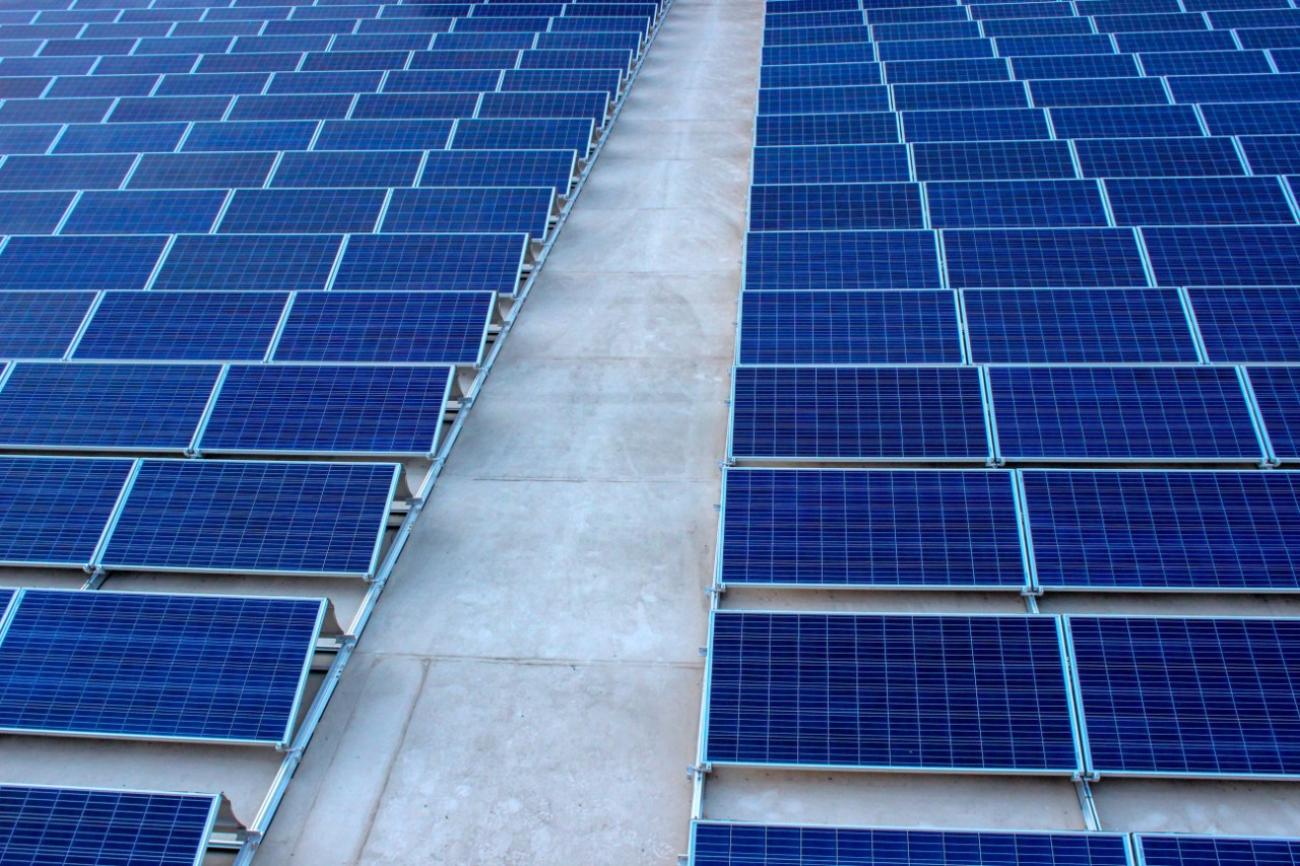Egypt’s energy situation is changing fast. With more than 100 million people and a GDP growth rate of 5.6 percent, the country’s energy demand is ever-increasing. To help meet demand while transitioning towards a sustainable, resilient energy system, over the past decade, Egypt has embarked on an ambitious energy policy reform programme, including a set target to have 40% of its electricity come from renewable energy sources by 2035.
As part of this, the country is transforming its energy market by investing in energy efficiency that has reduced significantly the sharp spike in electricity demand, diversifying its energy mix by investing more in alternative renewable energy sources such as solar and wind energy. Both sources offer safer and more pleasant environments for the cities.
For instance, with UNDP’s support, the government of Egypt has supported a pivotal shift in the country’s lighting market by enabling an uptake in energy-efficient lighting systems, with more than 200 million LED bulbs sold in Egypt since 2015. This has led to a decrease in lighting-related energy consumption for both individual households and businesses.
The government has also heavily invested in various forms of solar power – both large and small scale. Sunlight is abundant all over Egypt, particularly in the South, and Egypt already hosts Benban, one of the largest solar parks in the world in the Aswan Governorate.
In parallel, the market for small-scale solar solutions is constantly increasing. UNDP is supporting the government to ensure it has in place the policies and regulations that enable the investments needed to meet this demand.
Through the award-winning ‘Egypt-PV’ project, UNDP and the government aim to remove the barriers to increase power generation by small, decentralized, grid-connected Photovoltaic (PV) systems, on easily replicable and scalable system design, implemented by households and small- and medium-sized businesses. It also paves the way towards easier implementation of solar PV projects of installed capacity 4MWp to offset 0.6 million tons of CO2equ by 2034.
For homeowners or businesses, solar panels are a practical investment which helps them reduce their electricity bills while having reliable power.
Samar, an Egyptian entrepreneur, used solar power to make her eco-farm project come true. For her farm to be green, she knew it had to run on clean energy. After comparing the costs of solar power compared to usual diesel generators, she realized it was also the choice that made the most economic sense.
“I had a dream of having my own business. And this dream is coming true. When I started my project, I was worried that solar panels would need maintenance and cost more. My perception completely changed when I learned more about the technology and the return on investment over the year. I am able to supply the farm with clean energy through solar panels that costs less than the cost of regular generators”, said Samar.

Over 40 initiatives enabled the setup of 129 solar system plants in 15 governorates, which installed capacity of 11 MWp, with 17.6 GWh/year electricity in different factories, hotels, commercial and admin buildings, houses, educational facilities etc. The project has also extended technical support to the New Administrative Capital that installed 16 MWp over 52 government buildings in the new city.
The UNDP-supported project worked to strengthen the industry’s capacities by delivering professional training to around 200 trainees, with women accounted for more than 60% of the trainees.
The success of the Egypt-PV project, which can help drive the country’s budding solar power transformation, has three pillars. First, the government has established an enabling policy, institutional and regulatory framework to provide the basis for sustainable market growth. Second, efforts are also ongoing to strengthen the supply chain by building the capacity of the key supply–side stakeholders. And third, critically, it was complemented by efforts to get consumers to trust and adopt these new technologies – for instance, by demonstrating their economic competitiveness and reliability.
Sustainable energy sources like solar power are the energy sources of the future. The cost of solar energy continues to decrease while efficiency continues to rise. New forms of solar panels, like those fixed onto surfaces or built into glass windows, are being developed.
This year, Egypt is preparing to host the 27th session of the United Nations Climate Change Conference of Parties in Sharm El-Sheikh, City of Peace. The country is already taking steps toward a greener future, aiming to transform Sharm El-Sheikh into a sustainable, eco-friendly tourist destination that will be a model to replicate in other parts of Egypt as part of the national energy transition.
COP27 will also be the opportunity for Egypt to showcase how it is transforming its energy market to meet national demand and power growth while transitioning to a sustainable, resilient, forward-looking energy system.








